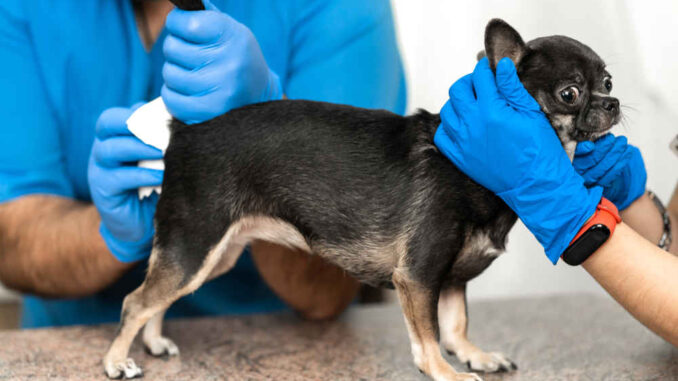
This article was updated on September 17th, 2023
If you’ve ever noticed a fishy odor from your dog’s behind or seen them scooting their bottom across the floor, you may be familiar with anal glands. However, many pet parents are unaware of these small sacs which are located on either side of the anus at approximately four and eight o’clock. When a dog defecates, the anal glands are squeezed, releasing a smelly fluid that helps mark their territory. Anal gland disease is very common in dogs. Just like other parts of the body, it is possible for the anal glands to become infected, abscess, or even rupture. Here’s what pet parents should know.
Signs of anal gland infections
The most common signs of anal gland infection include:
- Scooting the bottom on the ground
- Excessive licking or chewing around the anus or base of the tail
- Swelling or redness around the anus
- Discharge (blood and/or pus) or matted fur around the anus
- Reluctance to poop
- Expression of a thick, dark brown, or green discharge from the anal glands
- Other signs of pain, such as crying, whimpering, or aggression
- Other signs of illness such as lethargy and decreased appetite
Why did my dog get an anal gland infection? Top causes
Anal gland disease is extremely common in dogs. The narrow ducts that lead from the anal glands into the rectum can easily become clogged, leading to a buildup of fluid in the anal glands. This is known as an anal gland impaction. As the fluid accumulates and thickens, the anal glands become swollen and inflamed, and bacteria present in the feces can colonize the area leading to infection and then the formation of an abscess. An abscess is a painful accumulation of bacteria and pus, which can sometimes rupture or burst. The picture below shows an anal gland abscess (swelling to the left of the anus) which has ruptured.
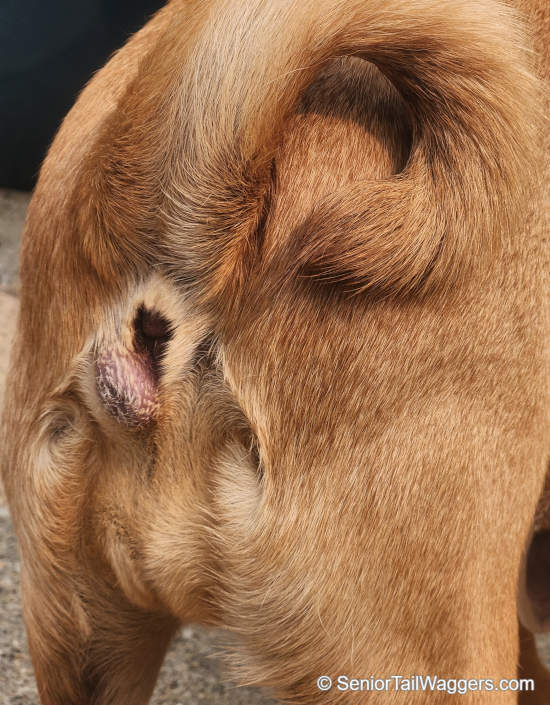
Anal gland infections can affect dogs of all breeds and ages. Some dogs are prone to recurrent anal gland disease. Risk factors may include:
- Obesity
- Changes in the consistency of the stool, such as constipation and diarrhea – This may be caused by many different things, including dietary indiscretion (if your dog eats something they shouldn’t), intestinal parasites, and more severe systemic disease.
- Frequent grooming – If a groomer expresses the anal glands externally frequently or unnecessarily, this can lead to inflammation in the area.
- Genetics – Smaller breed dogs (such as chihuahuas and miniature poodles) tend to be overrepresented.
- Underlying medical conditions such as allergies
Medical conditions that can lead to anal gland infections
Anecdotally, allergies may be associated with anal gland issues. Dogs can be allergic to fleas, something in the environment (atopy), or something in their diet (food allergies). Allergies cause itchy skin (pruritus), skin, and ear infections. Allergies may also lead to inflammation of the anal glands. If a dog is chewing and licking excessively in that area due to itchy skin, it may also affect their anal glands. Many of the medications used to treat allergies will also be beneficial for dogs with anal gland issues.
Difference between infections and anal glands that just need to be expressed
Overly full, or impacted, anal glands are the first step in the progression of an anal gland infection developing. It is best to schedule an appointment to have your dog’s anal glands expressed at the first onset of clinical signs such as scooting, licking, or chewing around the anus. In many cases, this will help prevent a painful infection from developing and save on cost of veterinary care as well.
How serious are anal gland infections in dogs?
Anal gland infections are not life-threatening; however, they are very painful and require prompt veterinary attention. In worst-case scenarios, an untreated infection can spread and damage other parts of the rectum or anus. Your veterinarian should be able to treat most infections by cleaning/flushing out the area and prescribing anti-inflammatories and antibiotics. They may also discuss ways to help prevent additional anal gland infections in the future. Your dog should start feeling better within a couple of days of starting treatment.
What you can do at home for a dog with anal gland issues & infections
If your dog develops an anal gland infection or abscess, they will need veterinary treatment. However, there are several things you can do at home while waiting for your appointment and to help prevent additional anal gland issues in the future.
1. Keep your dog at a healthy body weight
Dogs who are obese are at higher risk for developing anal gland issues, as well as other medical conditions such as arthritis and diabetes. You can keep your dog at an appropriate body weight by learning how to monitor their body condition score, feeding an appropriate amount of food, cutting back on treats or using lower calorie options, and increasing exercise.
2. Promote gut health
Dogs who suffer from diarrhea or constipation can have difficulty emptying their anal glands, leading to anal gland infection or abscess. Feeding a consistent diet, avoiding excessive treats or table scraps, and adding in a probiotic can all be beneficial for your dog.
3. Increase fiber intake
Fiber can help bulk up stool and stimulate anal gland emptying during defecation. Additional fiber may also be helpful in promoting GI health and maintaining an appropriate body weight. Options for adding fiber to your dog’s diet include:
- Canned pumpkin (not pumpkin pie filling) – work your way up to approximately 1-2 teaspoons per meal for small and medium dogs, and 1 tablespoon per meal for large dogs. Too much may cause diarrhea.
- Metamucil – discuss dosage recommendations with your vet
- Glandex soft chews – These peanut butter-flavored chews contain fiber, probiotics, and digestive enzymes to help bulk up stool and promote GI health.
- Fiber capsules – These unflavored capsules are easy to administer and formulated for veterinary use.
4. Omega 3 fish oil
These products have benefits for skin and joint health, as well as acting as a natural anti-inflammatory.
5. Put on an E-collar
Putting an E-collar on your dog will help keep them from licking and chewing at their anus and tail base, which can cause further inflammation and infection and prevent healing.
6. Apply a warm compress
If your dog tolerates it, applying a warm compress to the area for approximately five minutes twice a day may help with comfort and promote drainage of an abscess.
7. Manage any underlying allergies
If your dog has other underlying medical conditions, such as allergies, it will be important to discuss this with your vet and come up with a treatment plan. This may involve year-round flea prevention, a hydrolyzed protein diet, and medications such as Apoquel and Cytopoint to help manage itchy skin.
When to call the vet about anal glands infections
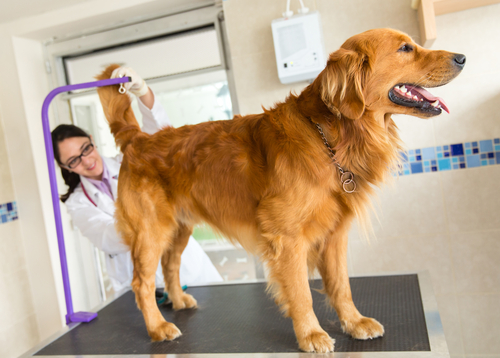
If you notice signs of an anal gland infection or abscess, it is best to schedule an appointment with your vet as soon as possible. While this condition is not an emergency, it can be extremely painful, and therefore best to start treatment promptly.
Veterinary treatments & costs
Your vet will diagnose an anal gland infection or abscess based on history and physical exam (including rectal exam). In complex or severe cases, a bacterial culture may be recommended, or a biopsy to rule out other conditions such as cancer. Bloodwork to help evaluate your dog’s overall systemic health prior to surgery or the use of certain medications may also be recommended. The cost of treatment will vary depending on the severity of the infection. Simply having your vet express your dog’s anal glands may cost around $50. With additional treatments, costs may be closer to $1000.
Treatments generally include the following:
Expression and flushing of the affected anal gland(s)
Your veterinarian will perform a rectal exam and express your dog’s anal glands. As this may be painful, they may recommend sedation or returning for this procedure a few days after starting treatment. If the abscess has ruptured, they will flush the area. Additionally, some veterinarians will instill a medication directly into the anal glands.
Anti-inflammatories
Anti-inflammatories will help relieve pain and inflammation.
Antibiotics
Antibiotics will treat the infection. There are several different antibiotics that may be effective, such as Clavamox.
At-home care
It is important to follow your vet’s treatment instructions at home. Even if your dog is feeling better, be sure to finish the full course of antibiotics and return for a recheck as instructed. Other at-home care may include putting on an E-collar to prevent your dog from chewing or licking at the area. A warm compress applied to the area several times per day may also help with comfort and drainage of an abscess. Your vet may also recommend additional supplements such as added fiber.
Surgery
If an anal gland abscess is present but has not yet ruptured, your veterinarian may recommend a small surgical procedure to drain and flush the anal gland. Additionally, dogs who suffer from frequent anal gland issues may benefit from having the anal gland(s) surgically removed.
How to prevent infections from recurring
Dogs who are prone to developing anal gland infections or abscesses may need to have their anal glands expressed on a regular basis, such as once a month. You can also help prevent anal gland issues by promoting gut health and providing a high-quality balanced diet with plenty of fiber.
If treatments such as medications and supplements are not helping with recurrent anal gland issues, your veterinarian may recommend surgery to remove the anal gland(s) known as an analsaculectomy, a procedure costing approximately $2,500. As the anal glands are not medically necessary, this will not negatively impact your dog. However, as with all surgeries, this procedure is not without risk. Among other possible side effects is a risk of damage to the area leading to fecal incontinence.
FAQ about anal glands
- How often should anal glands be expressed?
This will depend on your individual dog. Many dogs never need their anal glands expressed – in fact, if they aren’t causing a problem for your dog it is best to leave them alone. Other dogs may need their anal glands expressed much for frequently, such as once a month. Signs to watch for indicating that anal gland expression may be needed are scooting (rubbing their bottom on the ground) and licking/chewing near the anus or tail base.
- Who can help? (groomer, vet, vet tech, etc)
While it is possible to learn how to express your dog’s anal glands at home, your veterinary team is likely the best option, especially if your dog has a history of anal gland issues. Many groomers will also express anal glands, however, they do so with an external technique which can leave behind anal gland fluid and cause inflammation. Your veterinary team will express your dog’s anal glands internally, which is much more effective.
- When do dogs express their anal glands?
Dogs naturally express their anal glands when they defecate. Some dogs will also express their anal glands if they are scared, surprised, or stressed. If this happens, you will notice a fishy odor and possibly a yellow-brown discharge.
- What other problems can dogs develop with their anal glands?
In addition to infection or abscess, dogs can get cancer of the anal glands, such as adenocarcinoma.
Related posts:
Disclaimer: This website's content is not a substitute for veterinary care. Always consult with your veterinarian for healthcare decisions. Read More.






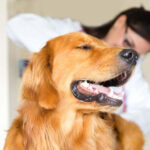
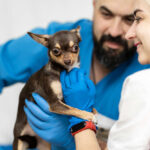
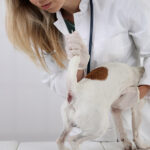
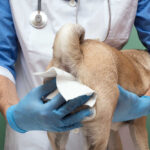
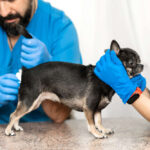
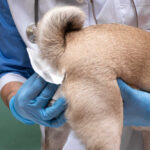


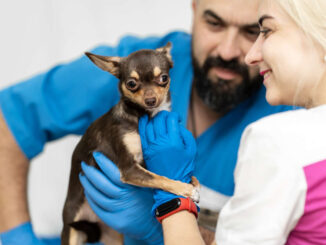
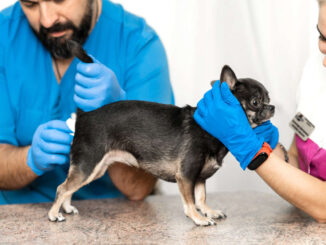
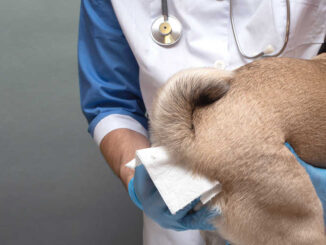
Be the first to comment